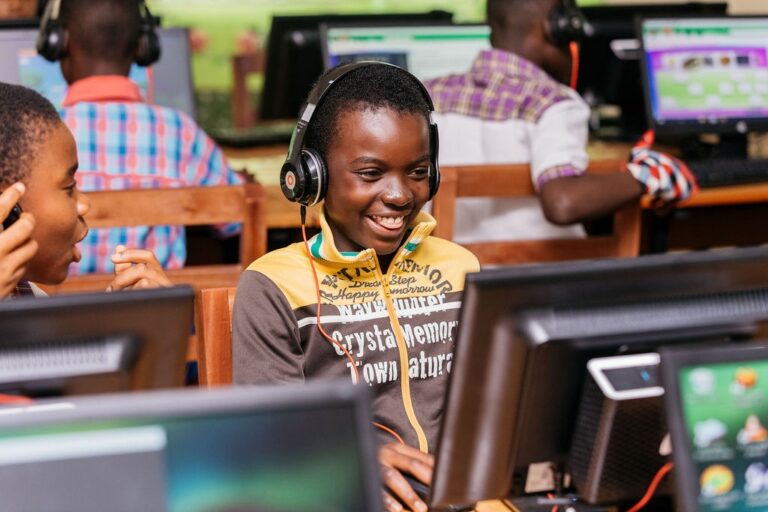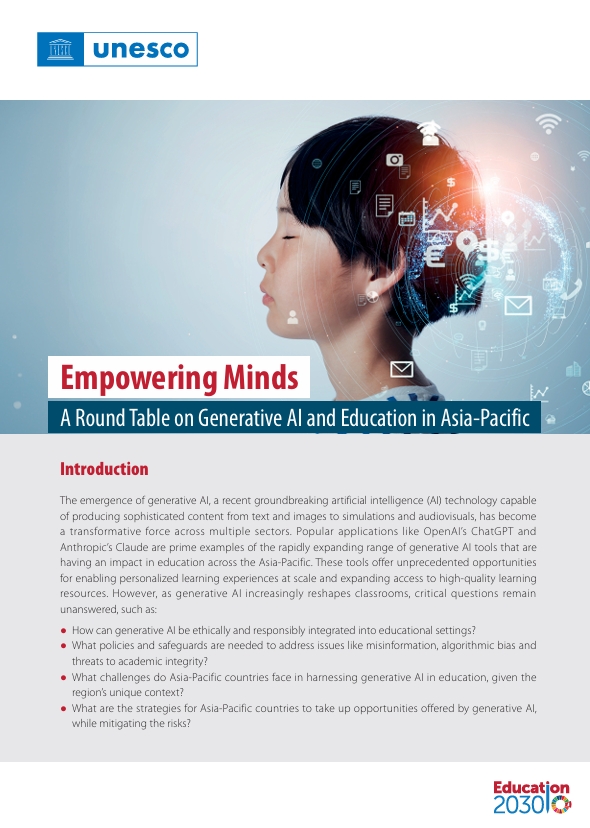The education sector stands to gain immensely from well-planned use of Artificial Intelligence enhancing, not replacing, human teachers. By embracing the idea that AI is fundamentally about augmenting human capacity, many of the more routine elements of teacher-student interaction will be shouldered by an intelligent system. This will not only reduce the task load of an individual teacher, but the feedback provided by an always-on, always-testing system will mean the time freed can be spent focusing on key areas of need.
Teachers need not fear that a robot is going to take their job anytime soon. There is no doubt that a well-trained, sufficiently resourced, human teacher is, and for as long as one can imagine will remain, the best student “interface” to the world. Whether catering for different intellectual, emotional or physical needs, outside of dystopian science fiction there is simply too much “human stuff” involved in the teacher-student relationship for an AI to fully assume the role. More practically the strand of AI that offers the most immediate promise in education is fundamentally tied to Machine Learning (i.e. data crunching and pattern matching) more than a genuinely autonomous intelligence. AI won’t take away teachers jobs, but it will certainly reshape them, for the better, in at least the following ways.
1) Intelligent automation will reduce and/or speed up essential daily tasks
The teacher-student feedback cycle is (naturally) never ending, and (inconveniently) often very time consuming and inefficient. Setting of homework, micro assessment, targeted practice, and critical activities, is inherently limited by the capacity of a single teacher and the hours in their work day. AI driven homework and assessment tools, setup and managed by a teacher but largely self-optimised will streamline if not entirely automate many of these tasks, multiplying the teacher’s work capacity significantly.
Basic software like this already exists, however an AI layer that tailors (and constantly optimises) the student experience will take it to the next level of utility and engagement. While meaningful assessment of complex responses (e.g. long free form text evaluation) is still nascent; regular “low stakes” micro quizzing with less complex Q&A is not only very valuable for teacher feedback but the process of testing-as-teaching is proven to improve student exam results.
The potential value of this type of assistance is not only in how it will reduce a teacher’s existing workload, but also in the opportunity it thus provides to try ideas currently impossible due to time constraints. Consider the techniques, approaches and ideas that a teacher could experiment with and evaluate if they knew doing so could be handled without adding hours to their day to day workload.
2) Machine Learning will provide highly relevant real time feedback on student progress
The more tasks an AI based system assumes (and the more data it can analyse), the more detailed and truly useful feedback it can provide teachers and schools on a student’s progress. Ongoing targeted, micro assessment will provide detailed real time information about student progress (individual and collective) to the teacher, highlighting issues that can be addressed quickly.
Patterns observed in student data can identify whether a topic has been explained badly (i.e. none of the class “get it” and the lesson needs revision) or an individual student simply hasn’t understood the topic (and they need focussed attention by the teacher). Machine Learning tools can provide impartial, meaningful and noise free early warning systems for students requiring intervention. The same system can then also be used to reduce the need for such interventions by incorporating adaptive learning materials focussed specifically on individual student requirements.
3) Intelligent software will select learning content suited to individual student’s need
Individualised learning is only practically possible with the support of technology. A teacher in a typical classroom of 20-30 (or more) students does not have the time to tailor a learning approach unique to each student. Yet the need and desire for this remains; all students learn at a different pace, some concepts come easily while others prove elusive. An AI supplied with a sufficient selection of learning materials can adapt itself to the needs of a student by observing their use of content and selecting the optimal format and structure. A teacher will assign a topic for revision leaving the AI to select specific content based on its observations of a student’s preferred means of study.
The ability for an AI to provide precisely the right content according to the student’s demonstrated comprehension and preferred learning approach can have an enormous impact on the student’s self-esteem and in turn their engagement with the topic. An AI assistant can gently and consistently push a student without overwhelming them, and ensure no topic is left misunderstood or mis-learned by querying a topic from multiple angles.
4) Objective performance reviews will empower teachers and schools
As important as the ability of a teacher to spot students in need is the ability for head teachers and school boards to observe the performance of their staff in an impartial, timely manner. Whether to ensure positive learning outcomes or to ensure a teacher is implementing required learning and pedagogy correctly; patterns derived from class aggregate data can be used to observe the performance of teachers and identify those in need of support, training or other intervention.
Performance reviews are not new, nor do they become nefarious with the introduction of AI. On the contrary Machine Learning will impartially identify whether a teacher’s performance is consistently good or bad (using data rather than subjective opinion) and also flag anomalies which can be discussed and dealt with proactively. By giving them access to the same reports as their supervisors technology will empower teachers to manage their own self-improvement as well as provide a factual basis for discussion in face-to-face reviews.
5) Constant micro assessment will reduce formal standardised testing
Arguably the most speculative possibility, but one that offers enormous potential, is the reduction of formal, one-hit, standardised testing. Without arguing detailed pros and cons, the general objectives of any standardised testing regime are essentially the consistent quantification of student progress, identification of underperforming schools/teachers and ultimately ensuring positive student outcomes. As explained above all of these could be better handled in almost real time with adaptive, regular micro assessment that incorporates inter-school and class specific pattern analysis. Doing so would avoid several major pitfalls in standardised testing such as the inevitable tendency to “teach-to-pass”; the fact that by definition “standardised” cannot take into consideration varied student/class circumstances; and most importantly the exam “cliff-edge” with which having a bad exam day can lead to life changing consequences for many students. It is here more than the other ideas above that a real paradigm shift is required in the sector, led by people who understand the limitations and potential of the technology.
The arguments about AI’s role in society and its effects on the workforce are many, varied and unfortunately often poorly informed. While there are certainly risks and pitfalls to be considered, they will be far more nuanced than “robot is coming for my job” that seems to be the default argument. In the case of the education sector clarifying this nuance is particularly important if we are to benefit from the huge potential AI tools offer. Real live teachers are here to stay. Nothing builds enthusiasm for a topic, the kind that will be needed to engage the next generation of thinkers in the rapidly evolving workplace, than a passionate, knowledgeable, and enthusiastic (human) teacher. We should be doing everything we can to help them do that job and there is a very clear path to doing so with a well-planned use of AI and Machine Learning.






